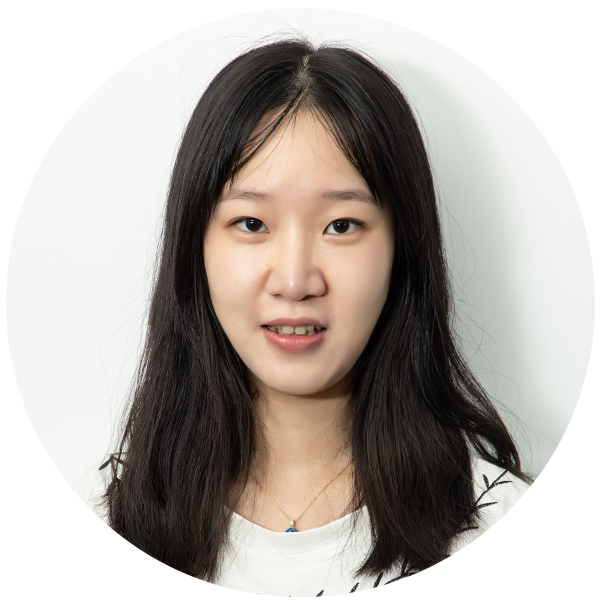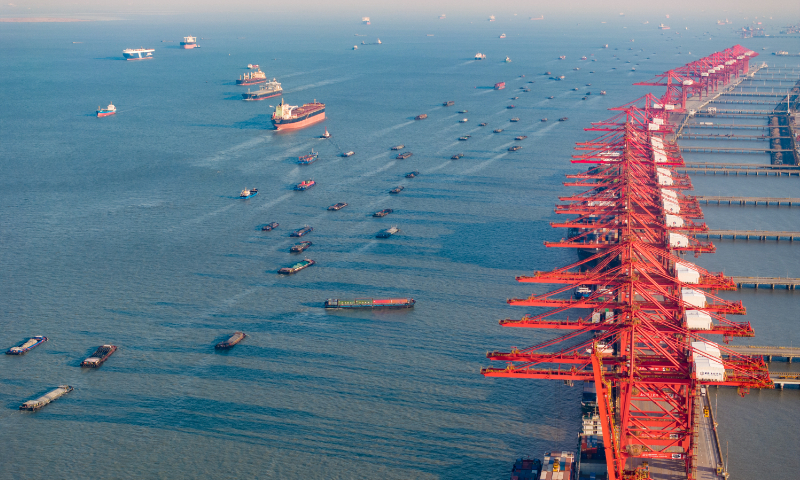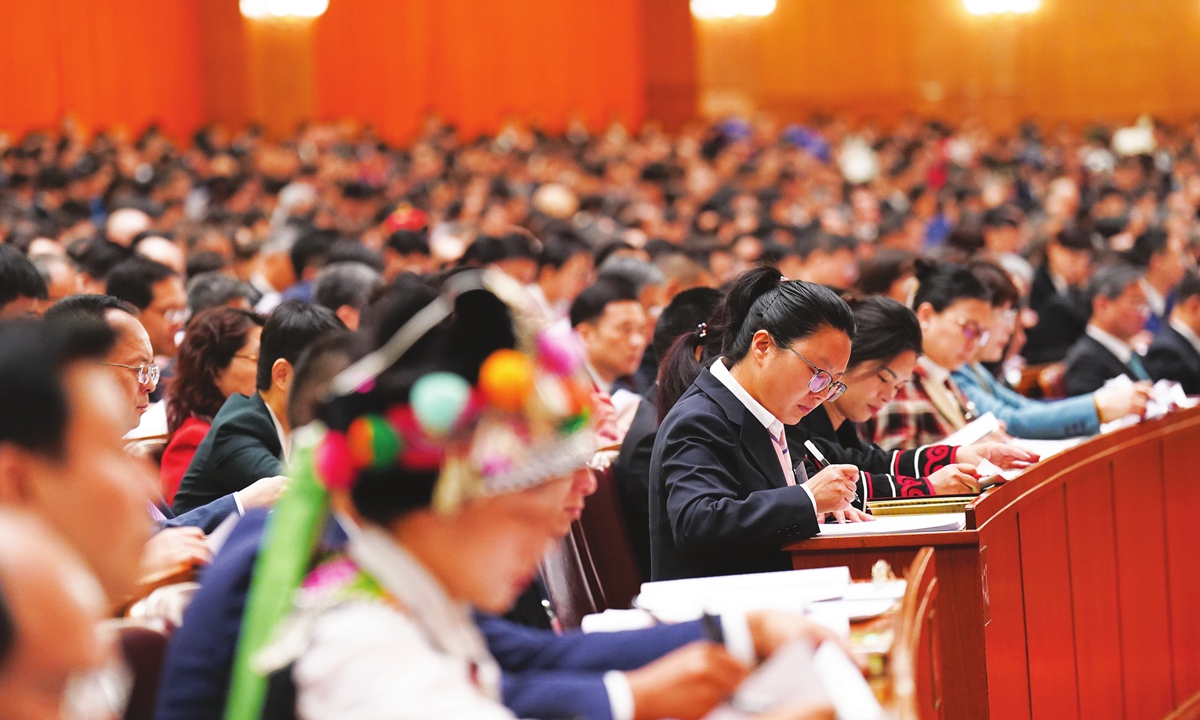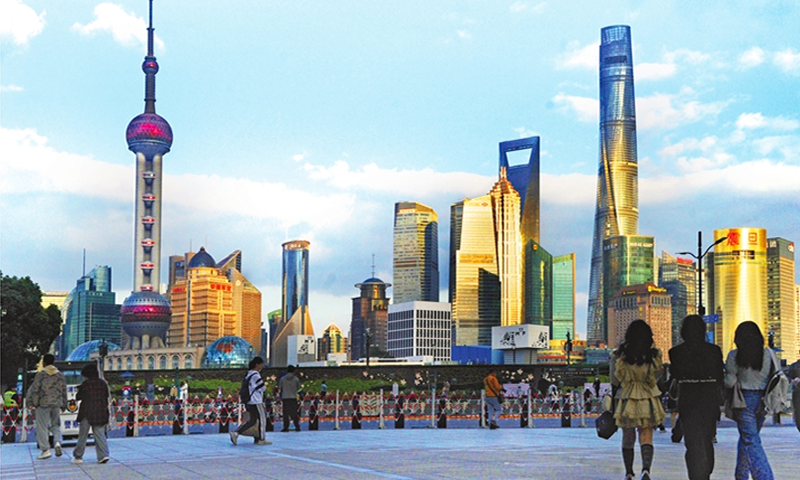More artworks displaying beauty of Chinese civilization, spirit of the times need to be ‘invited abroad’: artist Wu Weishan
Showcasing China’s ‘ocean mountains’
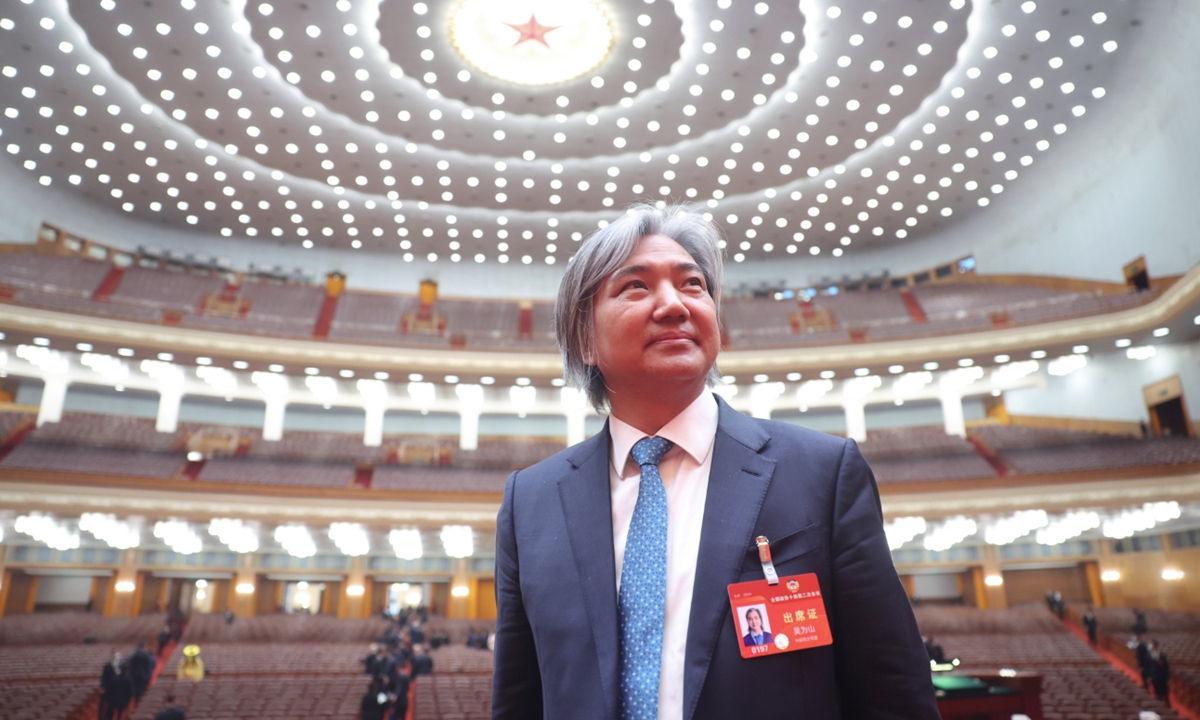
Wu Weishan, director of the National Art Museum of China Photo: Courtesy of National Art Museum of China
Editor's Note:
This is the 17th consecutive year that Wu Weishan, a world-renowned Chinese artist and the director of the National Art Museum of China, participated in the two sessions - one of the most important annual political gatherings that set the tone for the country's policy priorities in a wide range of fields from the economy and society to cultural development.
Since becoming a member of the Chinese People's Political Consultative Conference (CPPCC) National Committee in 2008, Wu has submitted over 40 proposals to the two sessions covering a wide range of agendas, including aesthetic education, global cultural exchanges and how to tell and spread Chinese stories to international community.
In 2023 alone, Wu visited and conducted field research in more than 20 places across China, which not only enriched his artistic creation but also deepened his reflections on social issues such as aesthetic education.
The Global Times had an in-depth interview with Wu during his lunch break on Saturday after he came back from a meeting in the Great Hall of the People.
How does he portray the spirit and beauty of Chinese civilization through the array of well-known sculptures, paintings and calligraphy works he has created? How can we promote the global influence of China's artworks? Will the sweeping artificial intelligence (AI) wave endanger the livelihood of artists? Wu, who started the interview by showing pictures he took during a recent sketching trip to Huangshan Mountain, one of the most famous mountains in China, provided his insights on these topics.
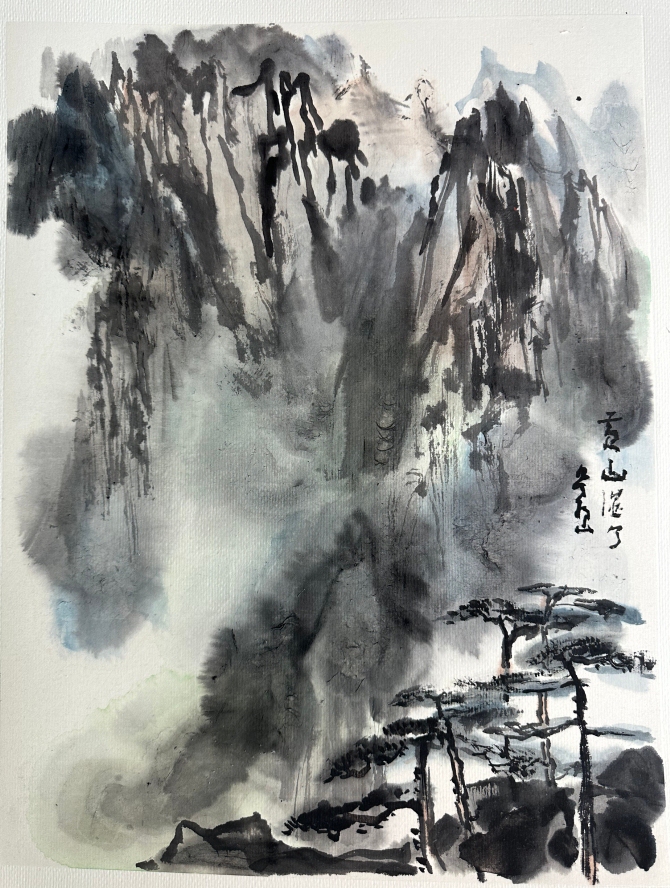
Painting Huangshan Shi Le (The Wet Huangshan Mountain) by Wu Weishan Photos: Courtesy of National Art Museum of China
Chinese artists need to enhance their international exchange discourse and gear up efforts to create more "fine works of art," so that more artistic works showcasing the "beauty of Chinese civilization" and the spirit of the times will be "invited abroad," Wu Weishan, a member of the Chinese People's Political Consultative Conference (CPPCC) National Committee, a world-renowned Chinese artist and the director of the National Art Museum of China, told the Global Times on Saturday in an exclusive interview on the sidelines of the ongoing two sessions.In such a way, the world will form a more comprehensive understanding of the culture of China - not only its profound cultural heritage, but also the contemporary culture that is developing in a constant state of renewal and rejuvenation, he said.
Wu's comment comes after China released on Tuesday the Government Work Report, which set the tone for a number of key cultural developments in 2024, including culture digitalization and protection and preservation of intangible cultural heritage. It also comes as China has been mulling over efforts to build itself into a leading country in culture and foster modern Chinese civilization at a new historical starting point.
This year also marks the China-France Year of Culture and Tourism. Also, the years of 2024 and 2025 will be cross years of culture cooperation between China and Russia, which all indicate China's stepped-up cultural exchanges and cooperation in the global arena.
With regards to how China presses ahead toward the goal of building a global cultural powerhouse, Wu stressed the importance of expanding the global influence of outstanding Chinese culture, while highlighting a bunch of pragmatic approaches.
"In terms of internationalization, what we need to work on is to make our [cultural works] be 'asked to go out,' rather than merely having to 'seek chances to go global,'" he said.
According to Wu, both historical and contemporary arts are important windows for the outside world to learn about Chinese culture and stories. "It involves both historical classic art such as the archaeological culture of Sanxingdui, the country's first emperor Qinshihuang and the Terracotta Warriors, as well as the contemporary art creation in China," he explained.
While the former has received global endorsement, the latter has yet to form worldwide influence. So this is what the Chinese artists should be doubling down on, Wu said.
He suggested that the Chinese art industry arrange more exhibitions at globally influential museums, art galleries and opera houses. At the same time, the country's artists should invite more talented foreign peers to visit China to see "the creativity of Chinese people in the new era."
"This is an important way for foreign artists to erase prejudice and deepen their understanding of China. Visiting China themselves provides a full, diverse, and multidimensional picture on an ocean instead of a small wave; a whole set of mountains instead of an individual peak," Wu explained.
Inspiration from Chinese culture, history
So far, more than 50 of Wu's sculptures have been collected by different museums and institutions in nearly 30 countries and regions, some of which are displayed in public spaces.
Recently, he has been making a sculpture of famous contemporary Chinese writer Lu Xun that will soon be shipped thousands of kilometers to Greece for an exhibition.
"Lu Xun is a representative of Chinese culture, and having his sculpture erected abroad also shows that his thoughts are being accepted by the Western world," Wu noted.
In 2022, Wu's sculpture titled Dialogue between Confucius and Socrates was erected in the Greek city of Athens, an important ancient cultural city. Wu said the sculpture carries great global ramifications in terms of the progress of human civilization and the global exchanges of philosophy.
"This scene featuring a dialogue between the two wisest philosophers would never have been realized in reality. But we have manifested it through artistic creation, and through the lens of China's vision to build a community with a shared future for mankind," Wu said.
Likewise, Wu suggested that Chinese artists draw inspiration from China's profound history, as well as their daily lives in the new era, presenting the world the uniqueness, the thickness and "national spirit" of Chinese civilization.
Since the 1990s, Wu has created about 600 sculptures of prominent figures in Chinese history, which Wu said all embody the excellent qualities and spirit of Chinese civilization.
"As I'm 'sculpting' them, they're also 'sculpting' and inspiring me," Wu recalled.
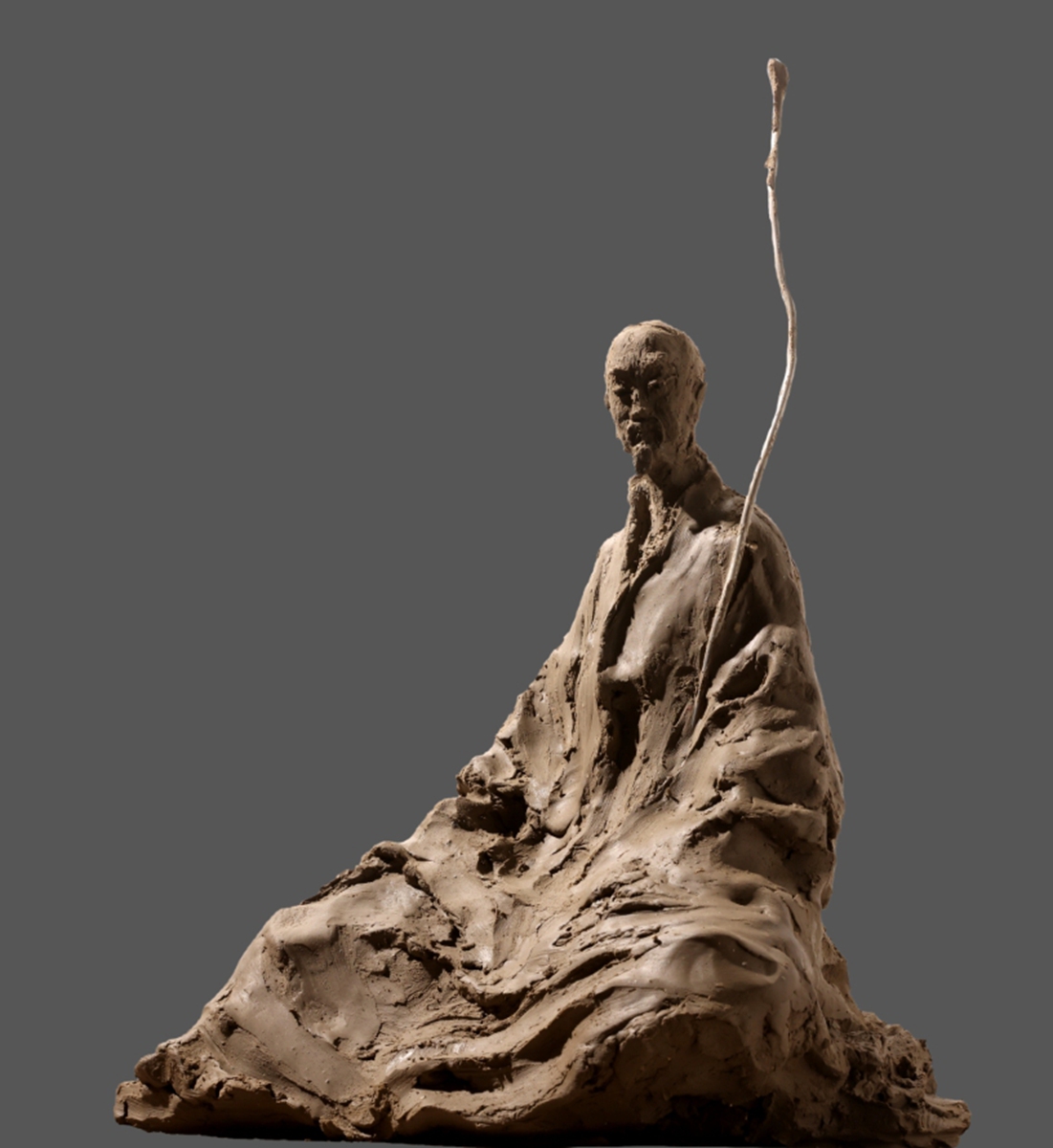
The sculpture of Qing Dynasty (1644-1911) painter Shi Tao, by Wu Weishan Photo: Courtesy of National Art Museum of China
He is now making a sculpture of Shi Tao, a famous painter from the Qing Dynasty (1644-1911), that he says "carries far-reaching significance for today."Shi Tao's key theory of one-stroke, which refers to the fundamentals of the art of painting, or put in a broader scope, the universal laws of the formation and development of everything in the universe, is about "passing on traditional Chinese philosophy through painting."
Last year, Wu, leading an array of peers, created a sculpture about the Long March, as he has also devoted himself to depicting stories involving "Red Culture."
The Long March was a military maneuver carried out by the Chinese Workers' and Peasants' Red Army from 1934 to 1936. During this period, they left their bases and marched through rivers, mountains and arid grassland to break the siege of Kuomintang forces and continue to fight Japanese aggressors. Many marched as far as 12,500 kilometers.
"Under the leadership of the CPC, China has undergone a marvelous journey of standing up, growing rich and becoming strong," Wu explained. "This is an important part and a shining point of Chinese history."
He also suggested that Chinese artworks, in order to have spiritual impact and global allure, take into account "the historical development, the heights of building a community with a shared future for mankind and engaging in dialogues between Chinese and global culture" during the creation process.
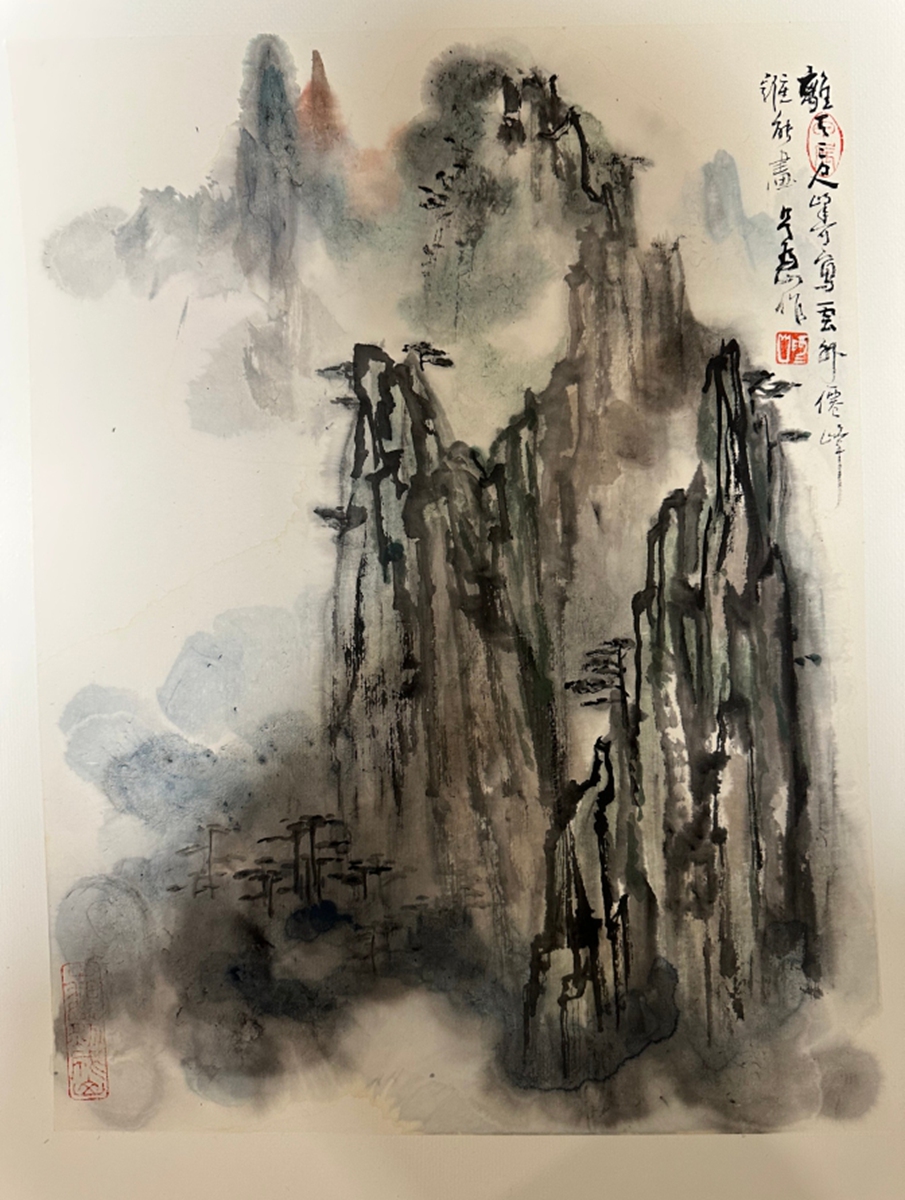
Painting Li Tian San Chi San (Three Feet Three From Heaven) by Wu Weishan Photo: Courtesy of National Art Museum of China
Proposal on national aesthetic educationIn a proposal for the two sessions, Wu recommends a full-fledged push for aesthetic education among the public.
"Aesthetic education not only involves an improvement in aesthetics but also is a way of cultural transmission and spiritual cultivation. Promoting nationwide education is beneficial for enhancing the overall quality of the population, strengthening the indigenous dynamics of social development, and advancing Chinese modernization with great cultural confidence," he said.
In January 2024, China's Ministry of Education issued a notice on the comprehensive implementation of aesthetic education in schools, which includes setting up an art education curriculum that coordinates with other subjects.
The Global Times learned that Wu had also made similar proposals regarding aesthetic education for the two sessions in previous years, including initiatives to introduce calligraphy into primary and secondary schools, and improve China's cultural quality.
Wu further explained that national aesthetic education should be a comprehensive, lifelong education, without restrictions to certain times, certain subjects and a certain scope. It is also about establishing an integrated education system that bridges different fields, with comprehensive design and phased implementation.
Wu said that there should also be targeted measures for the elderly, for example, building nursing homes into cultural universities, which will help the elderly to find a sense of belonging and new interests.
In another proposal that Wu made for this year's two sessions, he recommended that nursing homes set up different cultural subjects, such as painting, writing, dancing and singing, thus "creating an atmosphere of aesthetic education throughout society."
Will AI take over the art industry?
The year 2024 began with a tsunami of sweeping technological revolution. For example, AI has already been seeping into every corner of Chinese people's lives, producing short videos, creating beautiful artworks and writing eye-catching novels. It also has led to people rethinking human's role in today's evolving world.
When asked about whether AI will replace the work of artists, Wu shook his head.
"When we talk about artworks, human beings are the only creators. When an artist's creativity bursts out at the moment of inspiration, his artistic expression is unique. Art creation is something that emphasizes style, individuality and a certain level of contingency… So these characteristics determine that it won't be replaced by AI technology," Wu explained.
To further expound the issue, he also talked about his recent experience using generative AI to create a picture of a horse.
"By typing several keywords such as 'a running horse, high-spirited,' all of a sudden, boom, I saw a horse there. Does it mean that if you are good at vocabulary and literature, then you could basically accomplish everything with AI? The answer is no. The horse is stiff, or we could say it does not have a 'soul' inside," he noted. "So in no way could AI surpass the creation of a genuine artist."
Wu, nevertheless, also stressed that AI could be properly used to assist in the art creation process.
In February, Nanjing University unveiled a groundbreaking initiative to introduce AI to the curriculum for all incoming students. It marked the first time that a Chinese university has made AI education a mandatory course.
Wu said he welcomes the move.
"Technological progress has shaped the way people live and think, and even how a society moves forward. We cannot shy away from it and need to brace for such change," Wu noted, while giving the example of how he has been utilizing 3D printing technology to assist different angles of sculpture creation in the early stages.
